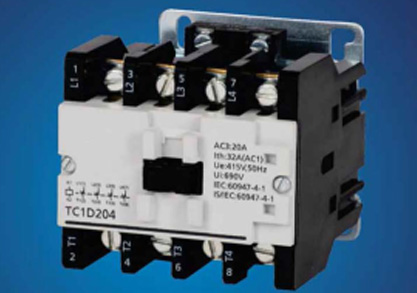Switchgear refers to electrical equipment that regulates the flow of electricity within an electrical system. It is used by utility providers and private facilities alike for two reasons: to prevent overloads and short circuits, and to de-energize circuits for testing and maintenance. The most familiar types of switchgear are circuit breakers and fuses, which interrupt the flow of electricity to a circuit when its current becomes too high; and power transfer switches, which transfer a buildings source of electricity from a primary source to a secondary source, such as accessing generator power during a power outage.
Basic Types of Switch Gear
Switchgear is initially categorized according to its interruption technology, the method by which it extinguishes its electrical arc. Using this categorization, there are five types of gear available on today’s market: oil circuit breaks, which vaporize oil in order to send a jet of oil through an arc; gas (SF6) breaks, which stretch an arc and then rely on the SF6 to extinguish it; vacuum breaks, which extinguish their comparatively small arc by stretching it; air breaks, which typically use a puff of air to extinguish an arc; and hybrid breaks, which use more than one type of breaking technology to extinguish an arc, such as gas and air.
Additional Classifications that Affect Equipment Choice
Within the classifications above are sub classifications that also determine what type of gear is installed in certain facilities and how it is serviced. In addition to interruption technology, breakers have at least eight more classifications: interruption standard (make before break/break before make, circuit break, or isolation); voltage level (low, medium, or high); general construction type (industrial, utility, marine, etc.); insulating medium (air, gas, oil, etc.); method of operation (manual, motor, or stored energy); type of current (alternating or direct); application type (transmission or distribution); and purpose of operation (isolation, load break, or grounding).
The Importance of Generator Switch Gear Maintenance
Regardless of the type of breakers a facility employs, their proper maintenance is crucial to worker safety and the preservation of assets, as faulty electrical equipment is a common cause of fatal fires that destroy commercial facilities. Yet, special attention is often paid to maintaining generator switches due to their critical role in emergency power production, switching a facility’s electricity source from commercial supply to generator supply in the event of an outage, and the back again when commercial supply resumes.
In many cases, facilities trust their switch maintenance to a provider of industrial power solutions that specializes in servicing emergency generators, both with routine maintenance and retrofitting, the latter when an older generator needs minor technology upgrades and not complete replacement. To learn more about which type of gear is right for your facility, contact a provider of industrial power solutions today.
Source: http://EzineArticles.com/5661156

